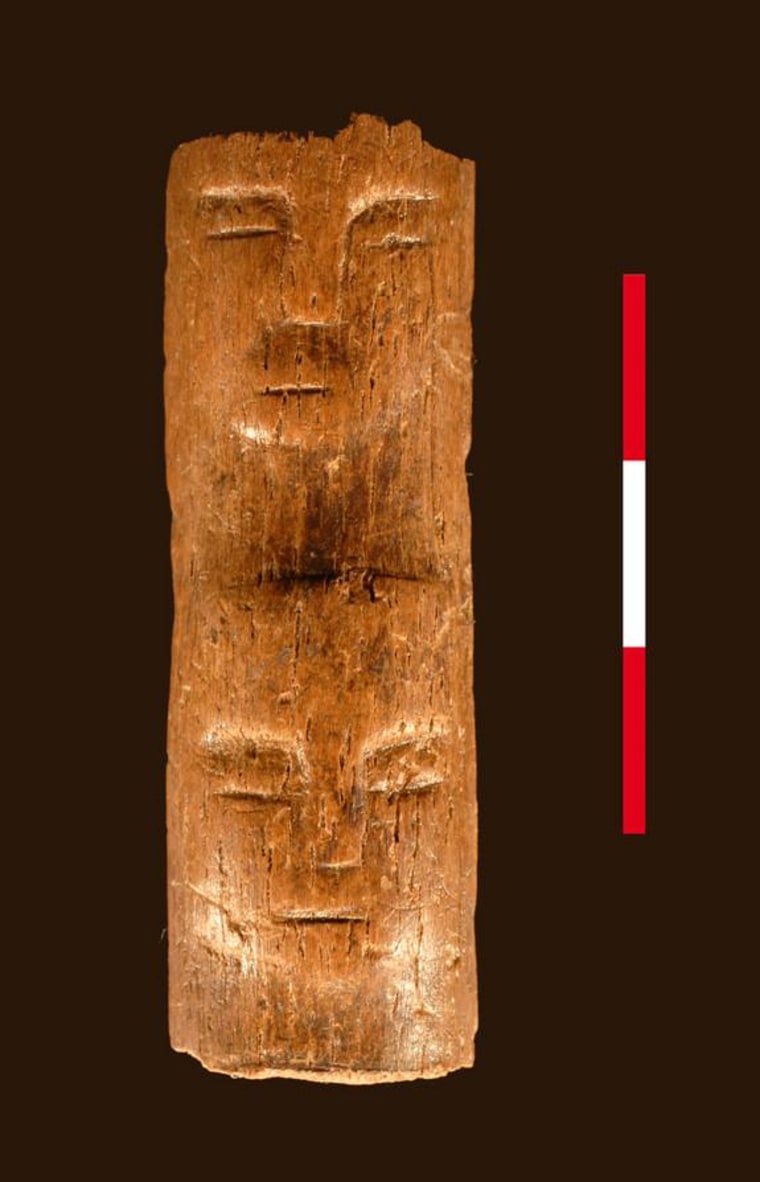Archaeologists have unearthed an ancient staff carved with two realistic human faces in southern Syria.
The roughly 9,000-year-old artifact was discovered near a graveyard where about 30 people were buried without their heads — which were found in a nearby living space.
"The find is very unusual. It's unique," said study co-author Frank Braemer, an archaeologist at the Centre National de la Recherche Scientifique in France. [See Images of the Ancient Wand and Skeletons]

The wand, which was likely used in a long-lost funeral ritual, is one of the only naturalistic depictions of human faces from this time and place, Braemer said.
Ancient site
Researchers first uncovered the wand during excavations in 2007 and 2009 at a site in southern Syria called Tell Qarassa, where an artificial mound made from the debris of everyday human life gradually built up in layers over millennia. (Though many stunning archaeological sites have been looted or bombed since the onset of the Syrian Civil War, this site is in a fairly peaceful area and has so far escaped damage.) [Photos: 7 Stunning Archaeological Sites in Syria]
Other archaeological evidence from the site suggests the ancient inhabitants were amongst the world's first farmers, consuming emmer (a type of wheat), barley, chickpeas and lentils, and herding or hunting goats, gazelles, pigs and deer, the authors write in the March issue of the journal Antiquity.
Mysterious wand
After the skeletons and wand were buried, someone seems to have dug up and removed the skulls, placing them in the inhabited portion of the settlement.
The bone wand was likely carved from the rib of an auroch, the wild ancestor of cows, and was about 4.7 inches (12 centimeters) long. Two natural-looking faces, with eyes closed, were carved into the bone, though the wand was intentionally broken at both ends, with more faces likely originally adorning the staff.
The relic's purpose and symbolism remain a mystery.
Exactly why someone dug up the skulls and placed them within the living areas of the settlement is also unclear. But archaeologists unearthed similar finds in Jericho, Israel, dating to around 9,000 years ago, where the skulls of ancestors were covered with plaster and painted with facial features, then displayed in living spaces.
One possibility is that the practice was a form of ancestor worship, in which the human faces represented the living presence of supernatural beings in a humanized form.
It's also possible the heads on display were trophies from vanquished enemies, Braemer told Live Science.
- Tia Ghose, LiveScience
Follow Tia Ghose on Twitter and Google+. Follow Live Science @livescience, Facebook & Google+. A version of this report appeared on LiveScience. Read the original report.
- In Photos: 'Alien' Skulls Reveal Odd, Ancient Tradition
- The 7 Most Mysterious Archaeological Finds on Earth
- 8 Grisly Archaeological Discoveries
Copyright 2014 LiveScience, a TechMediaNetwork company. All rights reserved. This material may not be published, broadcast, rewritten or redistributed.